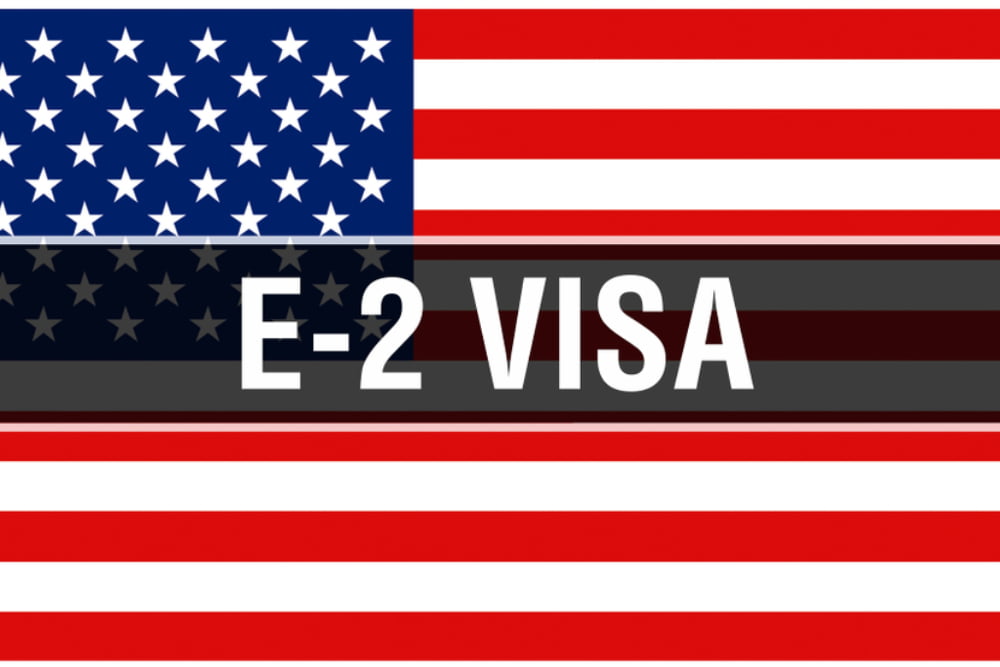E-2 Visa vs. E-2 Change of Status: What’s the Difference?
 For those looking to invest and work in the United States, the E-2 visa offers a significant opportunity. It enables investors and select employees from treaty nations to reside and work in the U.S. However, understanding the difference between obtaining an E-2 visa through a U.S. embassy or consulate abroad versus pursuing a change of status while already in the U.S. is essential. If you’re aiming to capitalize on the unique benefits of the E-2 visa, start a conversation with our knowledgeable immigration attorneys at Espinoza Law Offices.
For those looking to invest and work in the United States, the E-2 visa offers a significant opportunity. It enables investors and select employees from treaty nations to reside and work in the U.S. However, understanding the difference between obtaining an E-2 visa through a U.S. embassy or consulate abroad versus pursuing a change of status while already in the U.S. is essential. If you’re aiming to capitalize on the unique benefits of the E-2 visa, start a conversation with our knowledgeable immigration attorneys at Espinoza Law Offices.
What is an E-2 Visa?
The E-2 visa is tailored for nationals from countries that maintain treaties of commerce and navigation with the United States. This visa category facilitates the entry of investors who are prepared to make a substantial capital investment into a bona fide U.S. enterprise. To qualify, the investment must be substantial enough to support the successful operation of the business. The U.S. Department of State defines “substantial” as an amount that is:
- Substantial in a proportional sense, that is, in relation to the total cost of either purchasing an established enterprise or creating the type of enterprise under consideration.
- Sufficient to ensure the treaty investor’s financial commitment to the successful operation of the enterprise.
- Of a magnitude to support the likelihood that the investor will successfully develop and direct the enterprise.
The types of investments that might qualify can vary widely, from launching a new startup to acquiring an existing business. Each investment is evaluated on its own merits, focusing on its capacity to generate jobs and add economic value to the U.S. economy.
What is an E-2 Change of Status?
An E-2 change of status is an option available under USCIS regulations for individuals who are already in the United States under a different nonimmigrant visa classification. This adjustment allows them to switch to an E-2 classification without the need to leave the U.S. to apply for a visa at a consulate. According to 8 CFR §214.2(e)(8), this change of status is applicable for those who have come to the U.S. for reasons such as education or tourism, and who decide to invest in a U.S. enterprise.
This internal change is crucial for those who wish to pivot their stay towards actively managing and developing a U.S. business. It provides flexibility and continuity for the investor, allowing them to maintain their presence in the United States while transitioning their focus and resources into their investment. It’s important to note that this status change is contingent on the investor meeting all the standard E-2 visa requirements, including the substantiality of the investment and the prospect of directing and developing a commercial enterprise.
Key Differences Between E-2 Visa and E-2 Change of Status
When considering the E-2 visa and the E-2 Change of Status, there are three key areas to understand:
Location of Application
The application process for an E-2 Visa requires submission at a U.S. embassy or consulate abroad. This direct approach ensures that all necessary documentation is evaluated by consular officers, facilitating the issuance of a visa outside the U.S. In contrast, the E-2 Change of Status is applied for within the United States through the U.S. Citizenship and Immigration Services (USCIS). This option is available to individuals who are already in the U.S. on a different visa category, allowing them to switch their status without the need to leave the country.
Travel Flexibility
E-2 Visa holders benefit from significant travel flexibility, allowing them to leave and re-enter the U.S. freely during the validity of their visa. This flexibility is especially advantageous for business owners who need to manage responsibilities or engage in transactions both in the U.S. and abroad. On the other hand, those who opt for an E-2 Change of Status must secure an E-2 visa at a consulate abroad should they wish to travel internationally and return to the U.S. under E-2 status, since the change of status itself does not confer a visa.
Impact on Immediate Family
For applicants, the process includes the ability for immediate family members—spouses and unmarried children under 21—to apply for E-2 visas concurrently. This setup helps maintain family unity as the primary visa holder establishes and operates a business in the U.S. However, with an E-2 Change of Status, family members already in the U.S. must file separate applications to change their status, or if outside the U.S., they must apply for E-2 visas at a consulate, making the process slightly more intricate and demanding.
Each of these areas requires careful consideration to ensure that the path chosen best fits the needs and circumstances of the investor and their family. At Espinoza Law Offices, we have a strong track record of guiding clients through both paths. Make your entry into the U.S. business world with our online immigration lawyer.
Make the Right Choice for Your Investment
Deciding between an E-2 visa and an E-2 change of status is significant for any potential investor or business person. Each option carries different benefits and implications for your professional and personal life. At Espinoza Law Offices, we provide comprehensive guidance to help you make the most informed decision. For further information or to start your application, schedule a consultation today.
